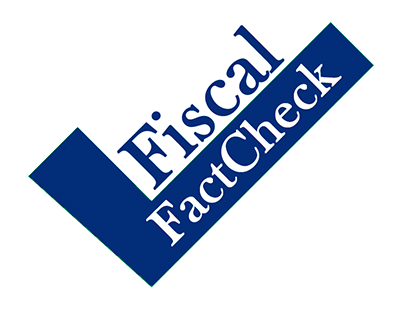Is CBO's Math on the BCRA Wrong Because It Uses Faulty Numbers?
The White House tweeted out a video Wednesday saying "the Congressional Budget Office's [CBO] math doesn't add up" because they use "faulty numbers." To support this, the White House makes two claims. First, CBO's early estimates of how many people would be covered by the Affordable Care Act (ACA or "Obamacare") exchanges differs from the number of people actually covered this year. Second, the video claims CBO's "faulty baseline estimates" means it "falsely assumes Obamacare will cover 18 million next year."
We rate these claims as lacking context. For the first claim, while CBO's estimates are estimates and are not going to be perfect, they were roughly correct in the overall number of uninsured but less accurate about how people obtained coverage. For the second claim, CBO is not using a "faulty baseline" – it uses an old baseline because it was instructed to do so by Congress to evaluate the reconciliation bill.
The Congressional Budget Office's math doesn't add up.
Faulty Numbers = Faulty Results pic.twitter.com/zdf4bZ01ma— The White House (@WhiteHouse) July 12, 2017
In its first claim, the White House refers to CBO's revised 2012 estimate of how many individuals would use the Obamacare exchanges, stating that 25 million were projected to be on the Obamacare exchanges whereas only 10.3 million got coverage through the exchanges in 2017. These numbers are accurate descriptions of both the 2012 estimate and a release last month from the Centers for Medicare & Medicaid Services that reported 10.3 million had signed up on the exchanges and paid their premiums for 2017. CBO's 2012 estimate projected that in 2017, 29 million would be uninsured.
CBO's most recent estimates from January 2017 show that it was significantly off on how many people would receive coverage from each source but remarkably close in its overall coverage numbers. The largest difference is that fewer employers than expected have dropped coverage and moved their employees onto exchanges, so roughly the same number remain uninsured. Specifically, CBO now projects 27 million to be uninsured in 2017, which is actually 2 million lower than the 2012 projection, but only 10 million will purchase coverage through the exchanges – 15 million less than in the 2012 projection.
In its second claim, the White House says CBO is using a "faulty baseline" because it is using estimates from March 2016, where it projected that 18 million individuals would purchase insurance through the exchanges in 2018. CBO revises its projections of insurance coverage every year, and this projection has been subsequently revised down to 11 million in the January 2017 baseline (a number that will increase to 13 million in 2020 and beyond). However, Congress requires CBO to use the March 2016 baseline to measure the Better Care Reconciliation Act (BCRA). Because Congress used the Fiscal Year (FY) 2017 budget resolution to set up the reconciliation process that allows them to pass the BCRA with a simple majority, that reconciliation legislation is supposed to be measured against the same baseline as the budget.
In each of its reports on the House and Senate ACA "repeal and replace" legislation, CBO has explained that it uses the March 2016 baseline in "consultation with the budget committees." In other words, CBO uses the March 2016 baseline because it is instructed to. CBO notes that "it is unclear how different categories of insurance would be affected and whether the budgetary effects would differ noticeably" if it used the 2017 baseline instead.
CBO offered an explanation as to why its estimates are so different between March 2016 and January 2017. Although the number of insured people is similar, more people are covered by employer plans and less by the exchanges. As CBO explained:
Relative to CBO's March 2016 baseline, CBO and JCT reduced their estimates of the number of people enrolled through the marketplaces because actual enrollment in 2016 and 2017 has been lower than previously projected. Recent data also indicate that the number of uninsured people is close to the agencies' projections and that fewer employers have stopped offering insurance coverage in response to the ACA than the agencies had previously expected. As a result, CBO and JCT have increased their projections of enrollment in employment-based coverage and expect that most of the people who are no longer projected to obtain insurance through the marketplaces will instead be covered by employment-based insurance.
Overall, the White House's video on CBO's math and numbers is very misleading because it does not tell the full story. CBO's overall projections of the uninsured were very close, while the decision to use the March 2016 "faulty baseline" was approved by Congress.



